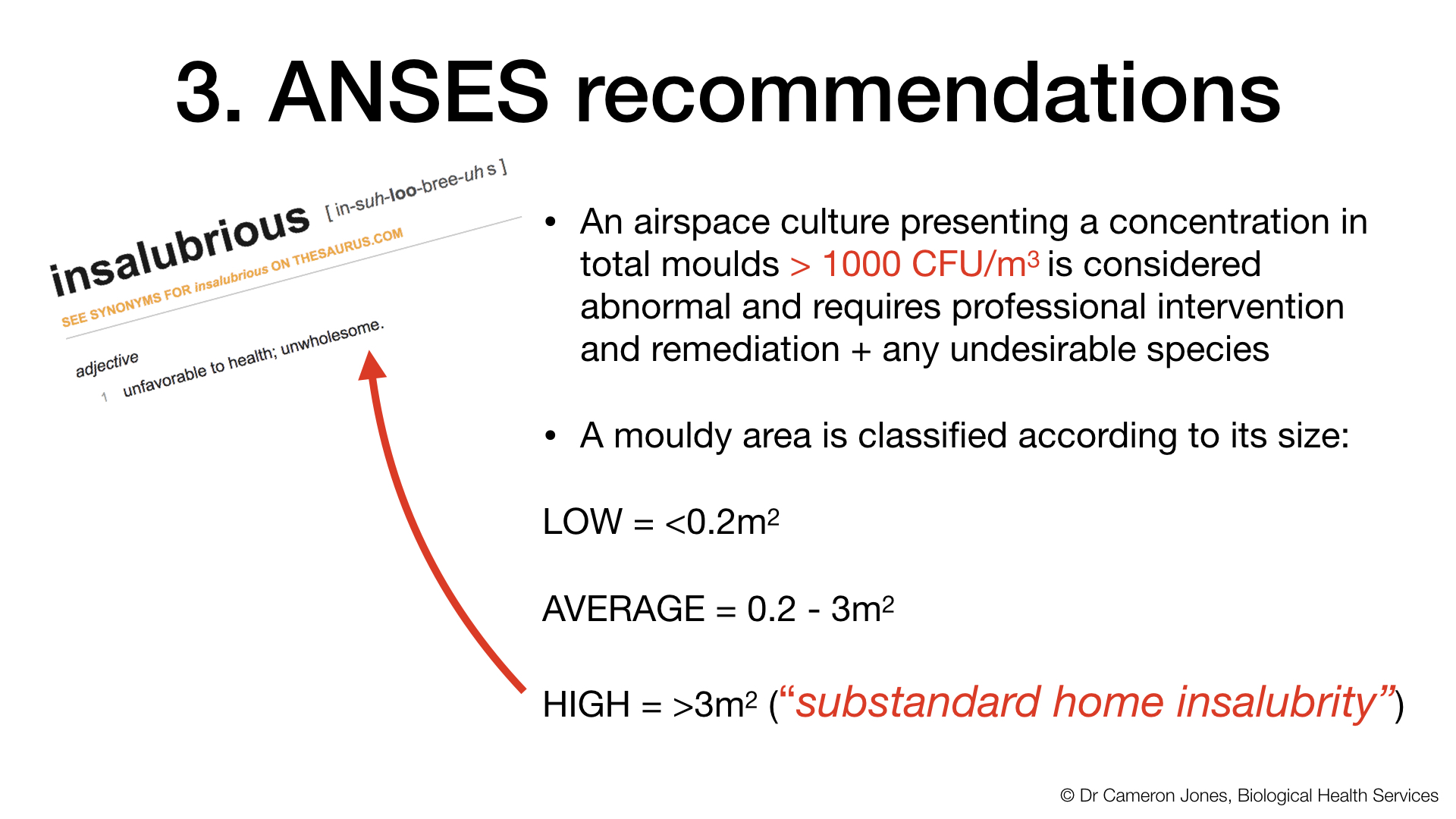What does a mould level greater than 1000 CFU mean for your health?
Mould levels and human health
The WHO in their seminal work from 2009 talk about 500 CFU - or colony forming units per cubic metre of air but what does that mean? Reading that document suggests that levels less than 500 mean the building is not water damaged - especially if you live in Finland! But what about indoor mould levels in the rest of the world?

Threshold limit values for indoor mould exposure and why they are important
Today's livestream delves into this topic of 'colony forming units' or CFU's- which are the numbers of discrete fungal colonies that appear (or grow) in petri plates when exposed to the air. The numbers on the plate can be translated into units per cubic metre of air. When this is done, we have THRESHOLDS. Think of these as numerical traffic lights.

At green, it's OK indoors, and your mould levels can be considered normal...but what happens if the petri plate traffic lights show AMBER or RED? Some great French research uses 3 ways of measuring risk indoors using the CFU and links this with the experience of asthma and rhinitis.

Comparison of the French mould exposure thresholds and the Australian Mould Guideline thresholds
Towards the end of this livestream I also compare the French thresholds with the Australian Mould Guideline (2010) by Dr Heike Neumeister and we see a strong correlation between the French and the Australians. This is great news for anyone trying the make a link between indoor mould exposure and adverse or the potential for adverse human health.

So what should I be looking for as a safe level of mould?
The research suggests that the magic number you want to be on the lookout for is an indoor mould level of less than <1000 CFU per cubic metre of air.
This will probably be written as:
< 1000 CFU/m3
It should also be noted that this research is based on viable fungal counts.
Which jobs put you more at risk for COVID-19?
As part of the breaking news segment, I cover some new research showing that some occupations make it more probable that you may come into contact with SARS-CoV-2 and contract COVID-19. Watch until the end to find out the 5 classes of 'at risk occupations'.
YouTube Link:
References:
Reboux G, Rocchi S, Laboissière A et al. Survey of 1012 moldy dwellings by culture fungal analysis: Threshold proposal for asthmatic patient management. Indoor Air. 2018;29(1):5-16. doi:10.1111/ina.12516. https://doi.org/10.1111/ina.12516
L L. Mold Exposure and Mitochondrial Antibodies. Altern Ther Health Med. 2020 Feb 21. pii: AT5799. [Epub ahead of print] - PubMed - NCBI. Ncbi.nlm.nih.gov. https://www.ncbi.nlm.nih.gov/pubmed/32088666. Published 2020. Accessed April 15, 2020.
Jones, C.L. (2019). Guidelines For The Assessment of Viable Fungal Hygiene On Indoor Surfaces Using RODAC Petri Plates. J Bacteriol Mycol Open Access. 2019;7(5):116‒126. https://medcraveonline.com/JBMOA/JBMOA-07-00256.pdf
Work-related Covid-19 transmission
Fan-Yun Lan, Chih-Fu Wei, Yu-Tien Hsu, David C Christiani, Stefanos N Kales
medRxiv 2020.04.08.20058297; doi: https://doi.org/10.1101/2020.04.08.20058297
Watch the Livestream on what mould levels below and above 1000CFU mean for your health:
Every week, I do live streams on public health topics. Join me on Facebook.
Dr. Cameron Jones

